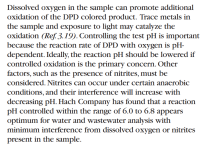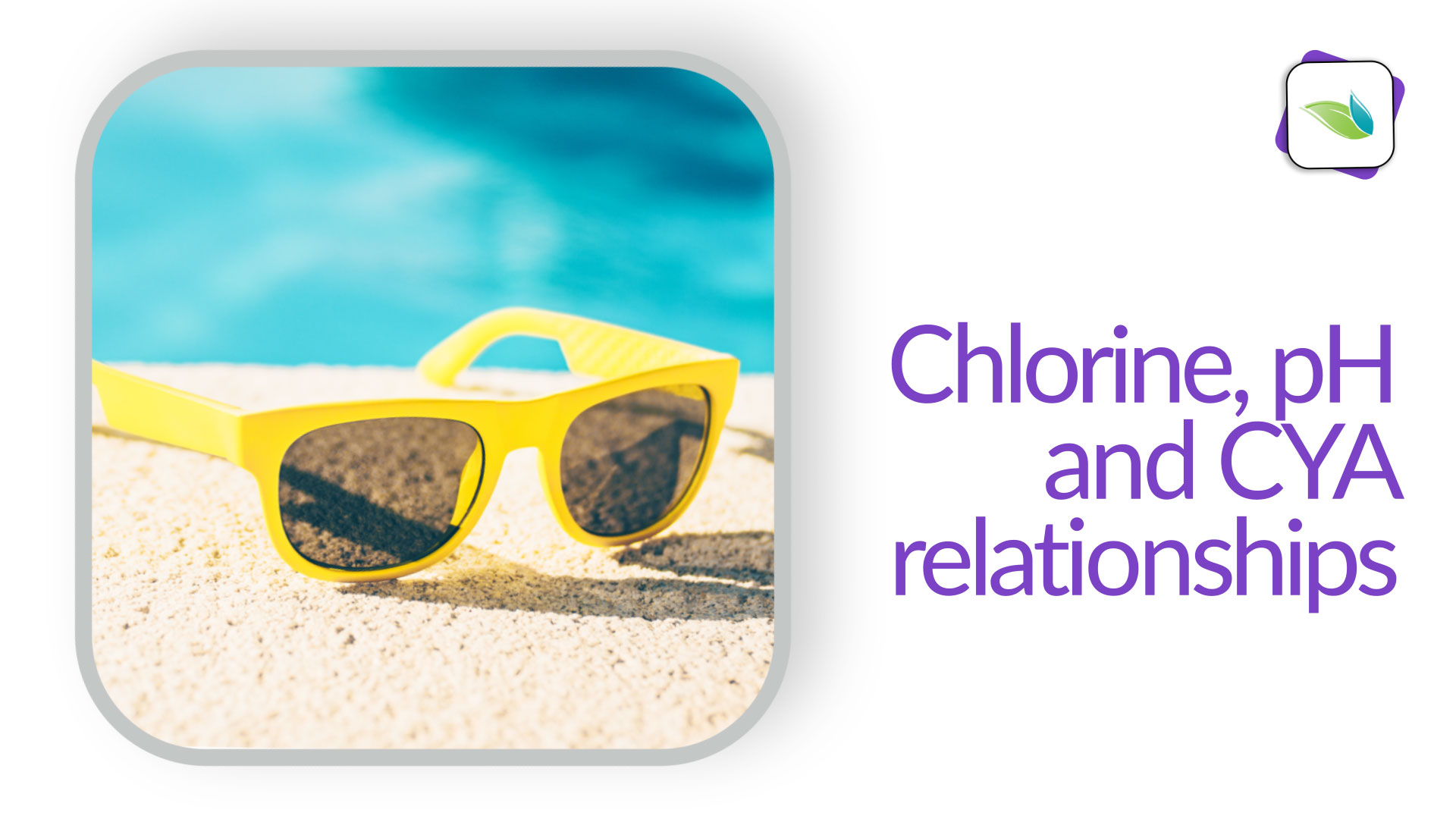Dissolved oxygen can react with the DPD reagent, causing a color change even if no chlorine is present, especially in high-oxygen conditions or when testing for very low chlorine levels.
Both Standard Methods and ISO procedures call for liquid DPD reagents prepared from DPD sulfate or DPD oxalate salts.
Liquid DPD reagents, inherently unstable, are subject to oxidation from either atmospheric oxygen or dissolved oxygen present in the preparation water.
It has been shown that the oxidation of DPD by oxygen is pH–dependent (Ref.2.5).
The liquid DPD formulations attempt to retard oxidation by lowering the pH of the indicator reagent.
The liquid formulations also incorporate disodium ethylenediamine tetraacetate (Na2EDTA) in order to “retard deterioration due to oxidation and, in the test itself, provide suppression of dissolved oxygen errors by preventing trace metal catalysis” (Ref 2.6).
The practice of adding Na2EDTA to the DPD indicator reagent is questionable because of the low solubility of EDTA in dilute acid solutions.



Interferences.
Additional halogens and halogenating agents produce positive interferences.
Oxidized manganese and ozone are positive interferences.
Color and suspended matter may interfere with the photometric measurement.
Chlorine greater than 500 mg/L will oxidize the DPD to a colorless amine, which can be interpreted as a low chlorine value.
High pH levels cause dissolved oxygen to react with the reagents.
Very low pH causes a positive free chlorine residual when mono-chloramines are present.
The test should be conducted between 20 and 25 °C.
Both Standard Methods and ISO procedures call for liquid DPD reagents prepared from DPD sulfate or DPD oxalate salts.
Liquid DPD reagents, inherently unstable, are subject to oxidation from either atmospheric oxygen or dissolved oxygen present in the preparation water.
It has been shown that the oxidation of DPD by oxygen is pH–dependent (Ref.2.5).
The liquid DPD formulations attempt to retard oxidation by lowering the pH of the indicator reagent.
The liquid formulations also incorporate disodium ethylenediamine tetraacetate (Na2EDTA) in order to “retard deterioration due to oxidation and, in the test itself, provide suppression of dissolved oxygen errors by preventing trace metal catalysis” (Ref 2.6).
The practice of adding Na2EDTA to the DPD indicator reagent is questionable because of the low solubility of EDTA in dilute acid solutions.



Free Cl2 reacts with the DPD color indicator, in the presence of phosphate buffer, to form a red dye.One other aspect of the test is that the DPD dye can be oxidized by air and turn pink. It doesn't typically happen because most pool water is fairly low in dissolved oxygen, but an extensive resting period after adding the dye could cause an slight increase in the titrant consumption.
Interferences.
Additional halogens and halogenating agents produce positive interferences.
Oxidized manganese and ozone are positive interferences.
Color and suspended matter may interfere with the photometric measurement.
Chlorine greater than 500 mg/L will oxidize the DPD to a colorless amine, which can be interpreted as a low chlorine value.
High pH levels cause dissolved oxygen to react with the reagents.
Very low pH causes a positive free chlorine residual when mono-chloramines are present.
The test should be conducted between 20 and 25 °C.



.png)